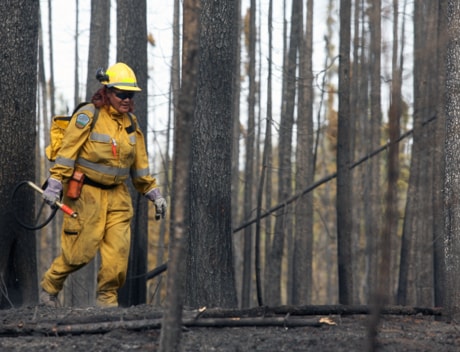EDMONTON — A non-profit group is seeking $1 million for a national pilot project to raise awareness about how forest communities can reduce the risk of destructive wildfires.
Partners in Protection is made up of volunteers from the Canadian Forest Service, Parks Canada, provincial and territorial governments, industry and some municipalities in Western Canada.
Kelly O’Shea, the group’s executive director, says the money would be used to promote a program called the National FireSmart Initiative. It would show how communities can reduce the risk of being charred by the kind of wildfires that ravaged Slave Lake, Alta., or the one that forced more than 1,000 people in northern Saskatchewan to flee their homes.
“Wildfires don’t have to become disasters,” said O’Shea, who noted that while FireSmart information has been available since 1999, there isn’t much public awareness about it.
“With the peak of the 2011 fire season still to come, communities across Canada are looking for ways to reduce wildfire risk.”
FireSmart includes guides for municipal governments on ways to reduce vegetation near buildings and neighbourhoods, how to better plan new subdivisions in forested areas and how best to respond to wildfire emergencies. It also stressed the need for wildfire evacuation plans.
There are guides for rural homeowners about keeping brush and trees from homes and outbuildings.
The pilot project calls for federal grant money to help communities pay for FireSmart projects and funding for a conference to bring experts together to come up with ideas to prevent fires.
O’Shea said the two-year project is ready to go, but without funding from Ottawa, the provinces and the private sector, they can’t do anything with it.
“This ounce of prevention would be a small price to pay in comparison to the suppression and replacement costs incurred by one fire such as the Slave Lake fire — which could easily exceed $500 million,” he said.
The Slave Lake blaze, which started May 15, destroyed or damaged more than 400 homes and businesses and forced 7,000 people out of the community. Residents began returning May 27.
Last week more than 1,000 people were airlifted from the remote Wollaston Lake area in northern Saskatchewan. No buildings were destroyed, but the flames burned to the edge of the community and smoke forced the temporary closure of the airport.
